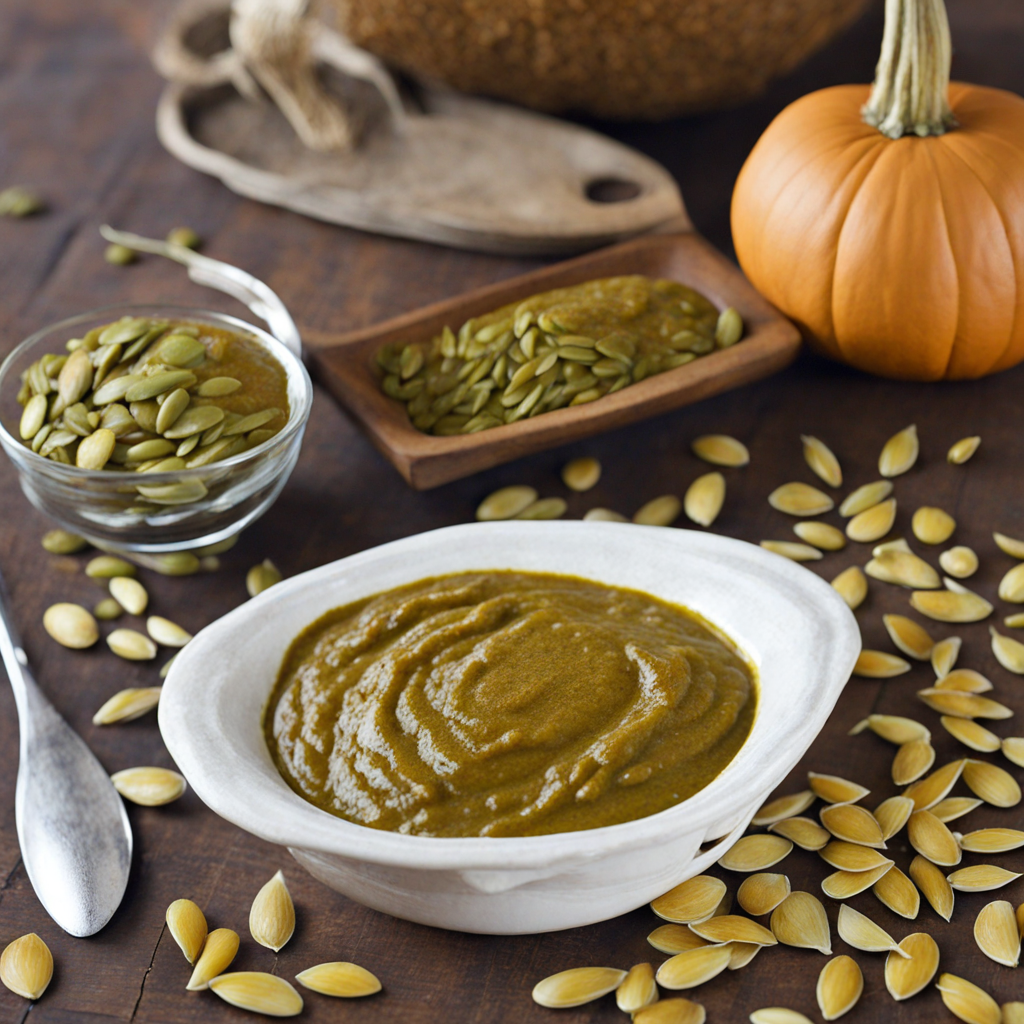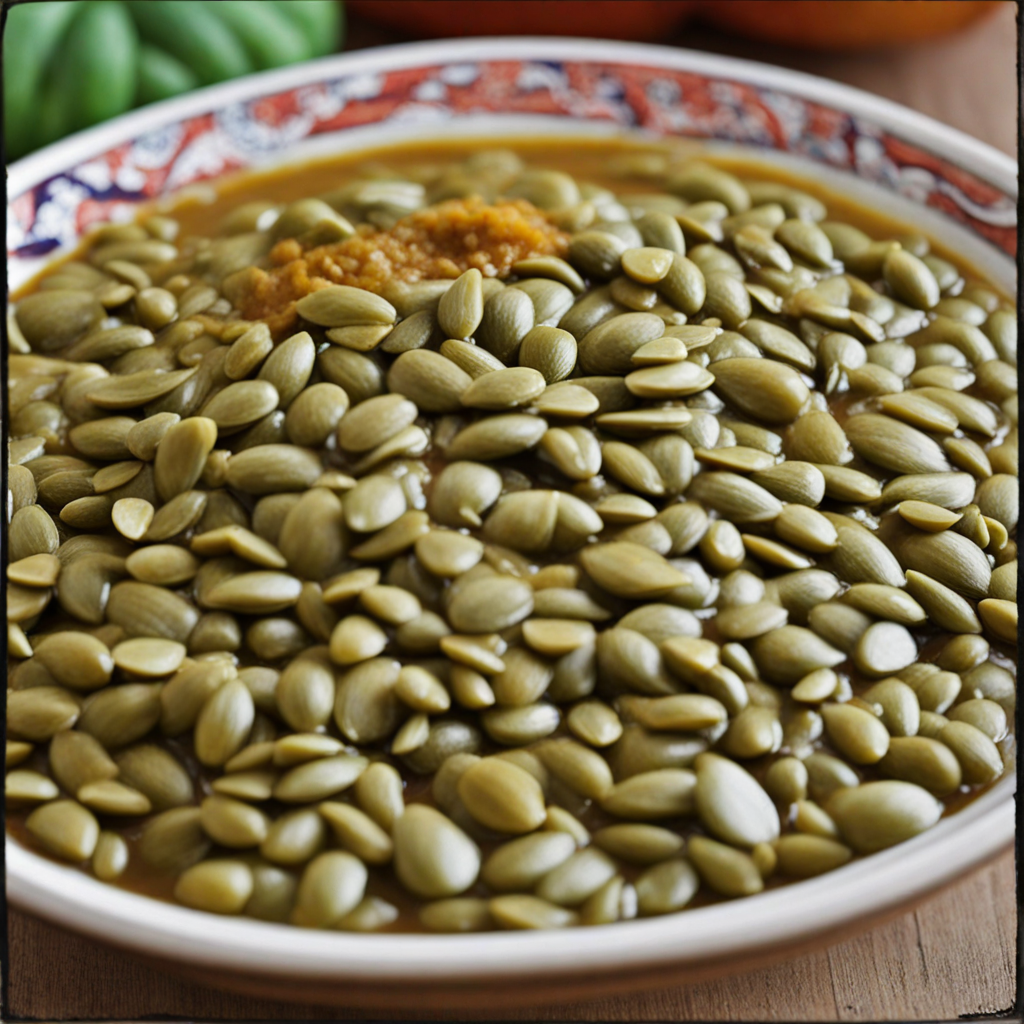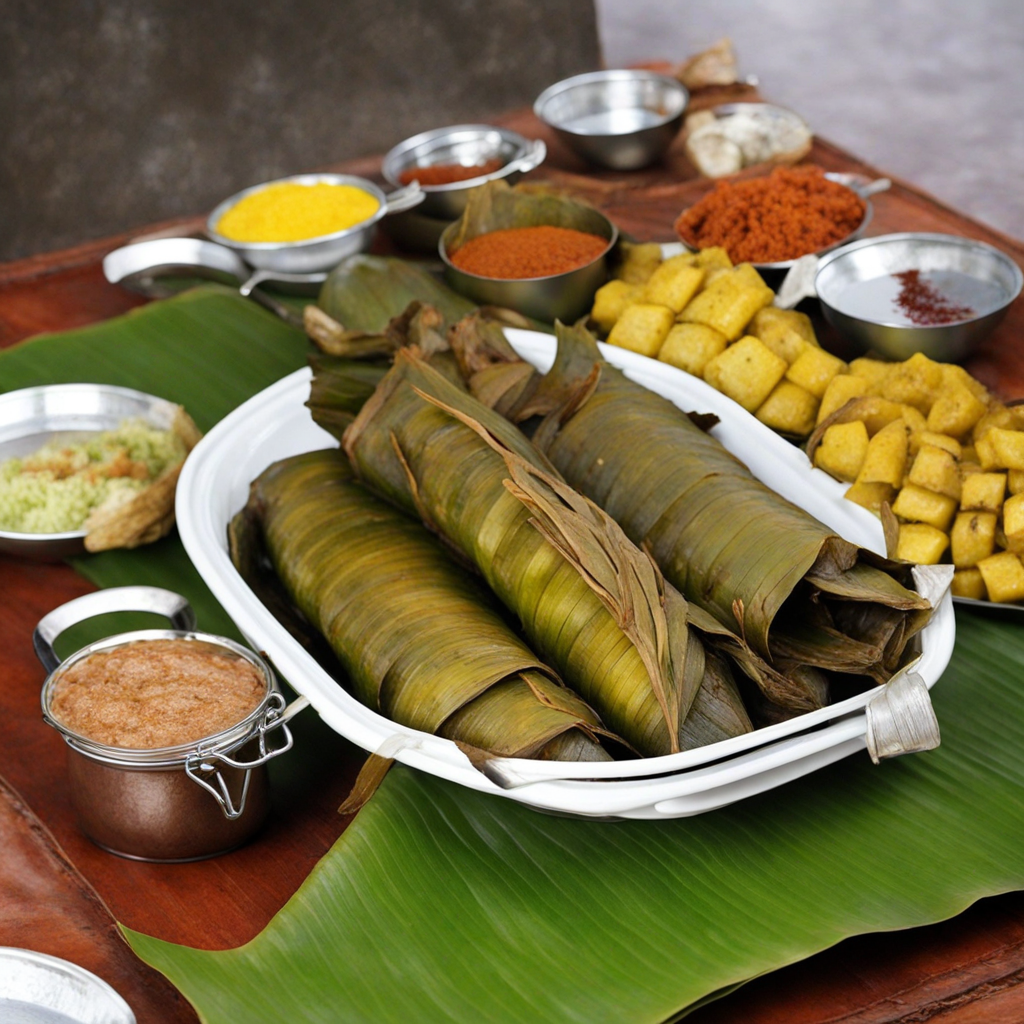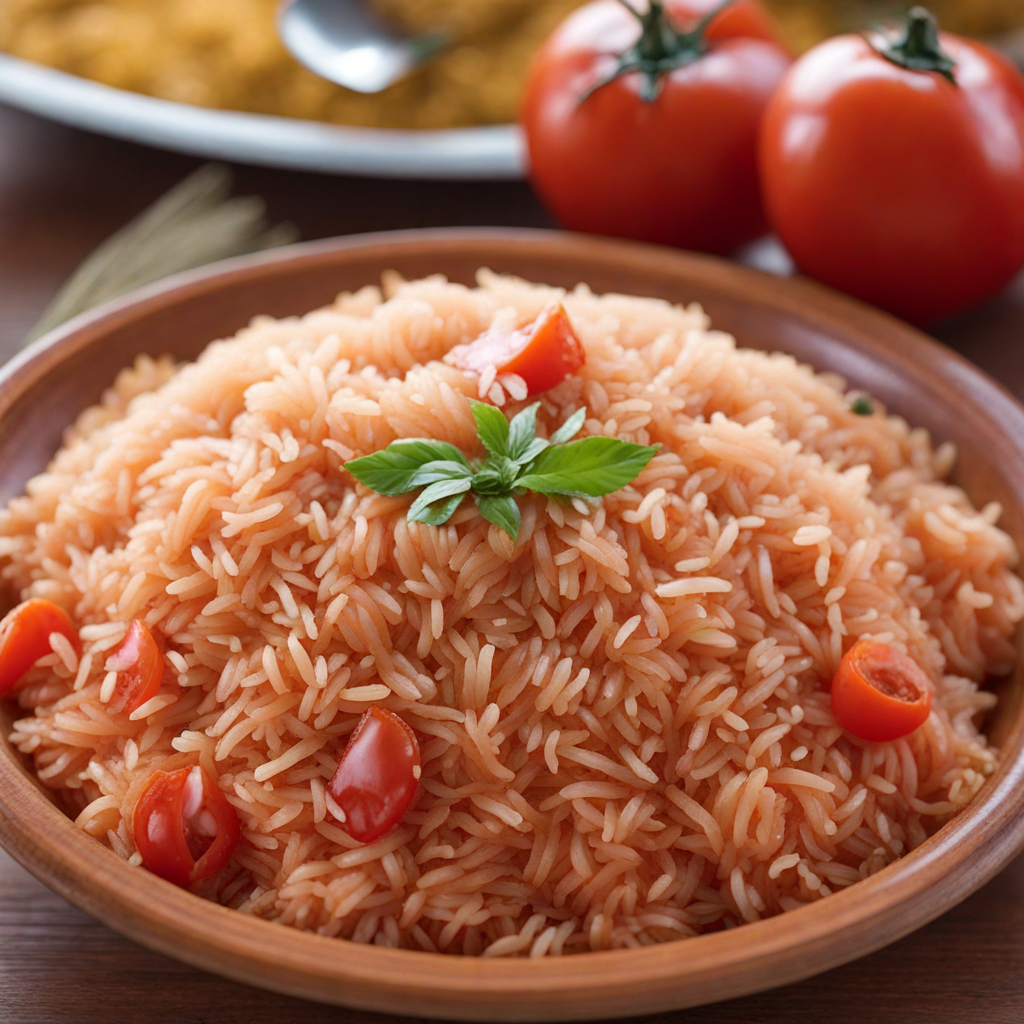Pumpkin Seed Sauce
Pumpkin Seed Sauce, known locally as "Mokolo," is a vibrant and nutty culinary delight that hails from the Central African Republic. This sauce is primarily made from roasted pumpkin seeds, which are ground into a fine paste, releasing their rich and creamy texture. The process of toasting the seeds enhances their natural flavor, giving the sauce a distinctive roasted aroma that captivates the senses. The blend of spices, often including garlic, chili, and local herbs, adds depth and complexity, making it a versatile addition to various dishes. The sauce is not just about taste; it embodies the essence of Central African cuisine, where ingredients are sourced from local markets and reflect the region's agricultural bounty. When served, Pumpkin Seed Sauce pairs beautifully with grilled meats, steamed vegetables, or as a dip for fresh bread. Its creamy consistency makes it an excellent coating that clings to food, ensuring every bite is infused with its unique flavor. The sauce is often drizzled over dishes, providing a contrast of textures and a burst of flavor that enhances the overall dining experience. In addition to its delicious taste, Pumpkin Seed Sauce is packed with nutritional benefits, offering a good source of healthy fats, protein, and essential vitamins. This makes it not only a flavorful accompaniment but also a nutritious one that complements various diets. Whether enjoyed as part of a traditional meal or incorporated into modern culinary creations, Pumpkin Seed Sauce is a must-try for anyone seeking to explore the rich flavors of Central African cuisine.
How It Became This Dish
Sauce de Graines de Citrouille: A Culinary Journey through the Central African Republic #### Origins Sauce de Graines de Citrouille, or pumpkin seed sauce, is a traditional dish that hails from the Central African Republic (CAR), a landlocked nation known for its rich cultural diversity and culinary heritage. The dish has its roots deeply embedded in the agricultural practices of the region, where pumpkins are widely cultivated due to their adaptability to the local climate and soil conditions. Pumpkins, belonging to the Cucurbita family, have been grown in Africa for centuries. Indigenous communities have historically used every part of the pumpkin: the flesh in stews and soups, the seeds for snacking or grinding into sauces, and the leaves and flowers in various dishes. The pumpkin seed, in particular, has been cherished not only for its nutritional value but also for its flavor, which adds a unique dimension to sauces and dishes. #### Cultural Significance In the Central African Republic, food is much more than sustenance; it’s a vital aspect of social identity, cultural expression, and community bonding. Sauce de Graines de Citrouille embodies this significance. It is not just a dish consumed for nourishment; it is a symbol of hospitality, tradition, and cultural heritage. The preparation and sharing of this sauce during communal meals foster connections among families and communities. The sauce is often served alongside staple foods such as cassava, plantains, and rice, providing a rich, nutty flavor that complements the starches. Its preparation can be a communal event, where family members gather to shell the seeds, grind them, and cook the sauce together, reinforcing social ties and traditional practices. In addition, the sauce is often featured during celebrations and festivities, marking important events such as weddings, harvest festivals, and religious ceremonies. During these gatherings, the dish is appreciated not only for its taste but also for its embodiment of the community's agricultural bounty and culinary traditions. #### Development Over Time The evolution of Sauce de Graines de Citrouille can be traced alongside the historical and cultural developments in the Central African Republic. Traditional cooking methods have remained resilient despite the influences of colonialism and globalization. In the past, the preparation of the sauce involved labor-intensive processes, where seeds were hand-ground using mortar and pestle, a practice that fostered community interaction. As the Central African Republic navigated through colonial rule and subsequent independence in the 1960s, culinary practices began to shift. Traditional methods faced competition from convenience foods and faster cooking technologies. However, the enduring appreciation for local ingredients and traditional recipes has allowed Sauce de Graines de Citrouille to maintain its place in the hearts and kitchens of many Central Africans. In contemporary times, the sauce has found itself at the intersection of tradition and innovation. While the classic recipe remains popular, modern chefs have begun to experiment with the sauce, incorporating it into fusion dishes or pairing it with international cuisines. For instance, it may be served as a dip alongside grilled meats or as a dressing for salads. The rise of culinary tourism has also played a role in the sauce’s development. With increasing interest in authentic and local food experiences, Sauce de Graines de Citrouille has garnered attention beyond CAR’s borders. Food enthusiasts and travelers seeking to understand the cultural significance of local dishes have contributed to a resurgence in interest in traditional recipes, prompting younger generations to engage with their culinary heritage. #### Nutritional and Culinary Value From a nutritional standpoint, Sauce de Graines de Citrouille is a powerhouse. Pumpkin seeds are high in protein, healthy fats, vitamins, and minerals, making the sauce not only a flavorful addition to meals but also a beneficial one. This emphasis on health is particularly significant in regions where food security and nutrition can be pressing concerns. The versatility of the sauce is another aspect of its appeal. It can be adapted to suit various dietary preferences and can be spiced or modified according to personal taste. Some versions may include tomatoes, onions, and spices such as chili or garlic, enhancing the sauce's flavor profile and catering to local palates. In the realm of culinary education, Sauce de Graines de Citrouille has begun to be featured in cooking classes and workshops aimed at preserving traditional African cuisines. These initiatives celebrate the profound connection between food and identity, offering participants the chance to learn about the historical contexts and stories behind the recipes. #### Conclusion Sauce de Graines de Citrouille is not just a dish; it is a narrative woven into the fabric of the Central African Republic's cultural identity. Its origins reflect the agricultural practices of the region, while its cultural significance underscores the importance of communal gatherings and traditions. Through its development over time, the sauce has adapted to changing circumstances while maintaining its authenticity, embodying resilience and continuity in a rapidly globalizing world. As it stands today, Sauce de Graines de Citrouille represents a bridge between past and present, tradition and innovation. It serves as a reminder of the importance of preserving culinary heritage while also embracing new influences. In each spoonful of this rich, nutty sauce lies the story of a people, their land, and their enduring connection to food as a source of nourishment, identity, and community. The future of Sauce de Graines de Citrouille is bright as it continues to evolve, inviting new generations to partake in its legacy while honoring its rich past.
You may like
Discover local flavors from Central African Republic







